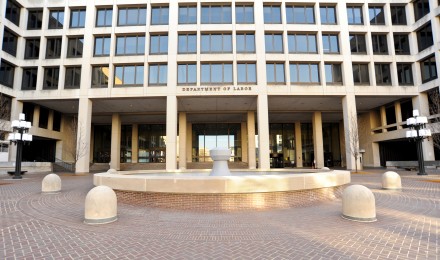Department of Labor (DOL) data show that initial jobless claims for the week ending September 28 increased 1,000 to a seasonally adjusted 308,000. The number fell below the consensus forecast of 315,000 by Bloomberg economists. Predictions by this group ranged from 300,000 to 335,000.
The DOL revised last week’s initial jobless claims up to 307,000 from the original report of 305,000. The 4-week moving average decreased by 3,750 to 305,000 from the revised average of 308,750 reported the previous week.
The number of persons receiving unemployment benefits falls below pre-recession (December 2007 – June 2009) levels.
Unemployment report details
For the week ending September 21, the continuing claim figures increased by 104,000 to 2.93 million Americans. This category excludes persons receiving extended benefits through federally-sponsored programs. Persons collecting extended payments and emergency assistance grew by 121,500 to 1.47 million in the week ended September 14.
The unemployment rate for workers eligible to receive unemployment benefits edged up to 2.3 percent from 2.2 percent in the week ended September 21.
Twenty-four states and territories reported an increase in claims, while 39 reported a decline. These data are reported with a one-week lag.
Initial jobless claims reflect weekly firings and typically wane before job growth can accelerate
Employers staying the course
Companies have not increase the hiring to the levels needed to grow the economy at a sustainable pace. However, the good news is that employers have shown enough faith that the economy is poised for improvement. As a result, the layoff of workers, even in the face of gridlock by politicians regarding the debt ceiling and a shutdown of the government, has not accelerated.
This resolved to maintain current employment levels lays the groundwork necessary to create more jobs, which lead to gains in payroll and wages. This will provide the needed support for more robust consumer spending. Consumer expenditures represent a crucial element in the makeup of the domestic economy. This category accounts for 70 percent of U.S. gross domestic product.
Based on information compiled by Bloomberg, Joshua Shapiro, the chief U.S. economist at Maria Fiorini Ramirez Inc. in New York, ranks in the top three when it comes to forecasting weekly jobless claims over the past 24 months. According to Shapiro, “Companies are lean and mean, but the hiring that usually goes along with claims like these just isn’t happening.”
The ADP Research Institute released a report that shows the private sector added 166,000 new jobs in September. The company revised the August report up to 159,000, but the figure was still below the 180,000 new jobs projected by 40 economists responding to the Bloomberg survey.
If the government shutdown persists, some employers that rely on government contracts will likely be dismissing workers in the near term. For example, United Technologies announced the shutdown could affect approximately 5,000 people. This news come as retailers prepared to pad their payrolls to meet the anticipated holiday demand.
Department of Labor (DOL) data show that initial jobless claims for the week ending September 28 increased 1,000 to a seasonally adjusted 308,000. The number fell below the consensus forecast of 315,000 by Bloomberg economists. Predictions by this group ranged from 300,000 to 335,000.
The DOL revised last week’s initial jobless claims up to 307,000 from the original report of 305,000. The 4-week moving average decreased by 3,750 to 305,000 from the revised average of 308,750 reported the previous week.
The number of persons receiving unemployment benefits falls below pre-recession (December 2007 – June 2009) levels.
Unemployment report details
For the week ending September 21, the continuing claim figures increased by 104,000 to 2.93 million Americans. This category excludes persons receiving extended benefits through federally-sponsored programs. Persons collecting extended payments and emergency assistance grew by 121,500 to 1.47 million in the week ended September 14.
The unemployment rate for workers eligible to receive unemployment benefits edged up to 2.3 percent from 2.2 percent in the week ended September 21.
Twenty-four states and territories reported an increase in claims, while 39 reported a decline. These data are reported with a one-week lag.
Initial jobless claims reflect weekly firings and typically wane before job growth can accelerate
Employers staying the course
Companies have not increase the hiring to the levels needed to grow the economy at a sustainable pace. However, the good news is that employers have shown enough faith that the economy is poised for improvement. As a result, the layoff of workers, even in the face of gridlock by politicians regarding the debt ceiling and a shutdown of the government, has not accelerated.
This resolved to maintain current employment levels lays the groundwork necessary to create more jobs, which lead to gains in payroll and wages. This will provide the needed support for more robust consumer spending. Consumer expenditures represent a crucial element in the makeup of the domestic economy. This category accounts for 70 percent of U.S. gross domestic product.
Based on information compiled by Bloomberg, Joshua Shapiro, the chief U.S. economist at Maria Fiorini Ramirez Inc. in New York, ranks in the top three when it comes to forecasting weekly jobless claims over the past 24 months. According to Shapiro, “Companies are lean and mean, but the hiring that usually goes along with claims like these just isn’t happening.”
The ADP Research Institute released a report that shows the private sector added 166,000 new jobs in September. The company revised the August report up to 159,000, but the figure was still below the 180,000 new jobs projected by 40 economists responding to the Bloomberg survey.
If the government shutdown persists, some employers that rely on government contracts will likely be dismissing workers in the near term. For example, United Technologies announced the shutdown could affect approximately 5,000 people. This news come as retailers prepared to pad their payrolls to meet the anticipated holiday demand.







